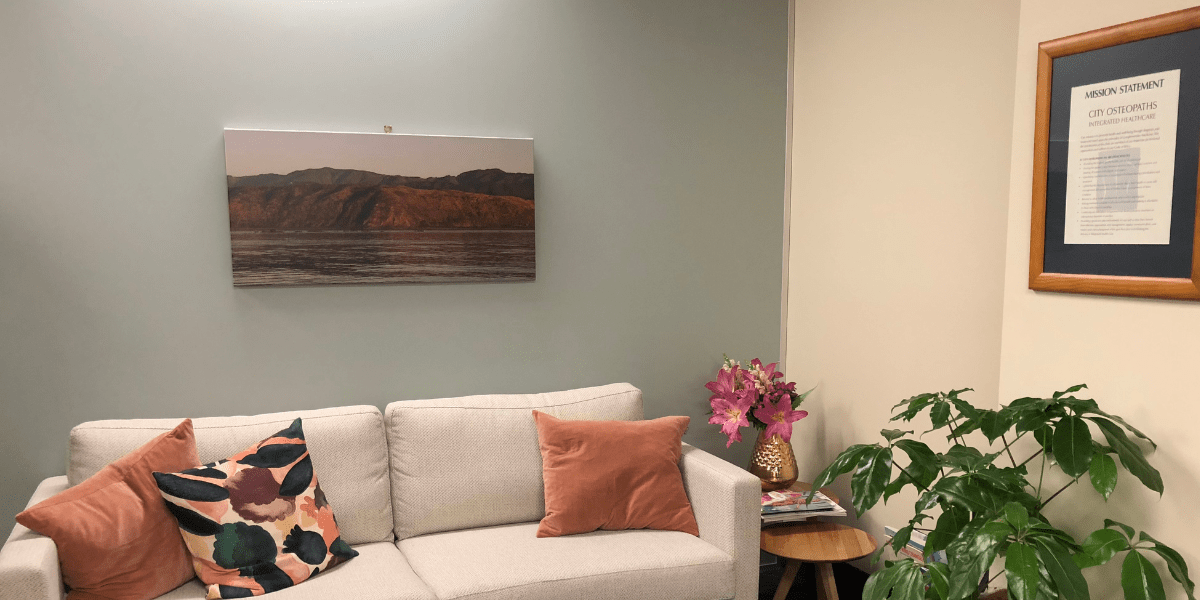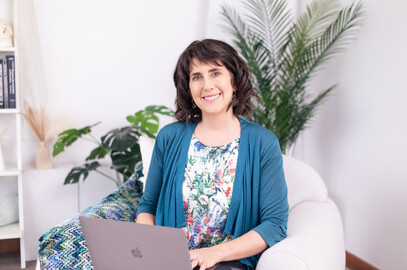I am posting this as Dr Viola Frymann has recently died in her mid 90's leaving a wonderful legacy of research on Osteopathic treatment of Children.
Dr Viola Frymann, Osteopath, has been one of my teachers and has provided me much inspiration on this path to help ease the suffering of others using the gentlest osteopathic approach. May she rest in peace.
A Touch Opens Door to Healing
Osteopath Viola Frymann says she simply helps ailing children realise their potential, but many parents speak of miracles.
SAN DIEGO – The little girl lay on the examination table, crying so violently that her body arched upward. Her eyes rolled wildly and her tongue jutted stiffly out of her mouth. The keening sound vibrated off the walls and seemed to stun everyone in the tiny room to numb silence. Everyone but the doctor. Crooning “All is well, all is well,” Dr. Viola Frymann approached the 2-year-old. Frymann rolled the small girl over and slowly rubbed her back. Next she cupped her hand around the child’s head and gently pressed. Behind her, a woman played a Beethoven sonata on the piano. After what seemed like forever, but was only 10 minutes, the child’s crying slowed to a small moan. Frymann then moved small, colorful toy in front of the littIe girl’s eyes and the child tracked it. “That’s wonderful!” Frymann said to her. “You know you’ve never been interested in things like this before!” After the child was returned to her mother, Frymann said,”It’s the first time she’s ever paid any attention to toys, This was a dramatic change.” To most doctors, the moment would have been easily dismissed. On the surface, little more had happened than that a brain-damaged child had watched a toy. But to Frymann. a longtime La Jolla osteopath whose work with disabled children is a mission that consumes her life, the session with the child was a breakthrough. “You get tremendous reactions from children if you give them a chance to develop everything they’ve got. ” said Frymann, a small, handsome woman with a freckled face and sharp brown eyes. “I just permit them to be everything they can be.” Parents who bring their children to Frymann – usually after they have exhausted all other treatments – talk of miracles. The doctor doesn’t like the word. “I tell children, ‘You ‘re the one who does the healing, not me. All I do is open the door and let it happen,” she said. That often startles parents, many of whom want answers and time-tables. Frymann won’t give them. “Parents come in and ask, ‘Do you think my child will ever walk?’ I tell them I don’t know. They are disconcerted because a doctor is supposed to know. But I say we will wait and see what he is capable of doing, and what his inward healing forces are,” Frymann said.
Answers or no, Frymann is a healer to many people. Her work has helped a disabled child take his first wobbly steps, a severely brain-damaged teenager feed himself and a baby cease hours and hours of endless crying for the first time in her life. “She got him out of trouble when no one else cared,” said Steve Gallup, whose son, Joseph, has been Frymann’s patient for four years. “The care is far superior to anything our son has received from any other doctor in San Diego.”
Born in 1985, Joseph was still not even crawling at 18 months. He cried incessantly, and his parents took him to specialist after specialist. Although osteopaths can prescribe drugs and perform surgery if needed, most, such as Frymann, prefer manual manipulation or the body. “We never got a meaningful diagnosis. When one neurologist at Kaiser wanted us to sedate him, we stopped going to doctors,” said Gallup, who works at General Dynamics. Instead, he and his wife, Judy, took Joseph to Frymann after hearing about her work from other parents. She told them their son was crying because of constant head pain caused by a problem at birth.
“We’re still not sure whether his birth caused his brain injuries, but after five treatments with Dr. Frymann he stopped crying and started tuning in to the world around him. Now, he’s walking and talking and doing a lot of neat things. He’s getting better all the time. He’s a different kid,” Gallup said.
Frymann’s nonprofit Osteopathic Center for Children is housed in a pastoral looking yellow cottage wedged incongruously among the trendy shops and high-rise condominiums of downtown La Jolla. The simple plaque outside the door is the only sign that this is not a residential hold-out against the town’s high-rise development.
Frymann, who is approaching 70, is a D.O., or doctor of osteopathy, a 100-year-old specialty emphasizing the body’s muscular and skeletal structure, Osteopaths are fully licensed physicians who see themselves as offering a more humanistic. hands-on approach than conventional medical doctors.
“The medical profession today only deals with disease and not with health,” Frymann said.
Instead, osteopaths say they are trained to treat the entire patient and not just a disease or symptom. They believe that the muscles, bones and joints are interdependent parts of the body, and if one part is disturbed or damaged, the other parts will not function properly. Manual manipulation of the body is preferred to drugs and surgery, although osteopaths can prescribe drugs and perform surgery if needed. About 5% of U.S. doctors are osteopaths.
Frymann specializes in cranial osteopathy. As she explains it, the brain has inherent movement within, as does the entire body. Every muscle in the body is attached directly or indirectly to the skull and spinal column. Manipulation of the skull, whicb consists of moveable, bevelled plates of bones, can affect the 12 pairs of cranial nerves, which then can heal vital functions, from respiration to vision to digestion. Frymann, and other osteopaths, say that many patients respond to their treatments when conventional treatments have failed.
“What scientific medicine doesn’t address today is the function of motion within the body, although it’s extremely logical and extremely scientific. There’smovement within the brain and we know that movement is being translated through the whole body right down to the feet,” Frymann said.
She believes that the contractions of an especially arduous labor during childbirth can damage a newborn’s brain. She also attributes some of this to the “gadgets” of increasingly technological birth, and says natural birth is the “ideal” for babies. She encourages parents to bring their newborns in for a structural evaluation immediately after birth.
“If young mothers would do that, we would prevent so many problems later on for that child,” Frymann said. Like her yellow cottage, Frymann’s work has gone largely unknown in San Diego. However, internationally she is famous as the doctor who will treat children labelled hopeless by everyone else.
To parents of the children she helps, she is a miracle worker. To her students who come from the College for Osteopathic Medicine of the Pacific in Pomona to train at her children’s centre, she is a mentor and a leader. To other like-minded professionals across the country, she is a pioneer.
“She is an outstanding physician in every way. and one of the pioneers in the field of cranial osteopathy,” said Dr. Paul J. Dunn, a Chicago pediatrician.
Dunn is one of about 40 medical doctors in the U.S. who uses osteopathy to treat brain-damaged and learning disabled adults and children. Dunn says most medical doctors dismiss the effects of osteopathy on brain-damaged children because osteopathy is never discussed in medical school. “I’d say about 99% of most M.D.s have never even heard of osteopathy,” he said.
At first glance, it’s hard to imagine children warming to Frymann. She’s not chatty and she is brisk to the point of brusque. Born in England, she is a perfect example of British restraint and austerity. Everything about her is spare; her simple pants and tunic top, her silver hair pulled neatly into a bun, her sharp and tight movements. Parents say they often feel nervous when they first meet her. To Frymann, children don’t set limits for themselves-the adults in their lives do that for them. “The most damaging thing we can do to anybody is lay our expectations on them,” Frymann said. “According to conventional medicine, there is no hope for some of the children I treat If you take away hope, what have you got?”
Although her patients come to her only by referral or word-of-mouth, the waiting list at her center for Frymann and her associate, Dr. James F. Murphy, Jr., can stretch to six months. This is also a teaching center, so students are always watching her sessions and she has a constant flow of out-of-town visitors.
This summer, a team of 15 doctors, government officials and medical students from Leningrad, U.S.S.R., spent two weeks in La Jolla studying with Frymann. They had met her earlier this year when she spoke at the G.I. Turner Scientific and Research Children’s Orthopedic Institute in Leningrad. During her visit there she treated a 4-year-old boy whose arm was severely deformed. “She impressed us greatly,” said Vladimir Adrianov, director of the institute, during his visit to La Jolla.
“Before she saw him (the child) he had a band of connected tissue instead of a bone in his arm. Several months after when an X-ray was performed it was noted that new bones were being formed in that band. There was marked improvement,” he said.
“I can not prove and Dr. Frymann can not prove what we are doing works, but when you have a 7-year-old who is not walking or a 9-year-old who is not talking, and they begin to, it’s more reasonable to assume it is a direct consequence of our therapy,” said Peter Springall, a clinical psychologist who specializes in child development and works with Frymann.
Frymann doesn’t worry about the opinions of the mainstream medical community. She’s too busy raising money for a clinic she hopes to open in Encinitas in 1991. She has raised S650,000 and needs a total of $2.1 million. She also dreams of an endowment of $10 million to help those children whose parents cannot pay.
“I want to see that every child that needs care, gets care, ” she said.
For those parents who can’t afford treatment now, Frymann often waives her fee.
Frymann’s belief in osteopathy goes back a long way. When she was 4, her father was found to have tuberculosis. Under the care or an osteopathic doctor, who prescribed a radical change in his diet, among other things, her father got better.
“Osteopathy changed the health of my family,” she said.
After breaking her foot when she was 12 – and ending her hopes becoming a ballet dancer – she received treatments from her family’s osteopath that convinced her to become a doctor.
Frymann received her osteopathic medical degree at the College ofOsteopathic Physicians and Surgeons in Los Angeles in 1949.
Coincidentally, that was the year the California Legislature banned further licensing of osteopathic physicians. Osteopaths were given the choice of keeping their osteopathic degrees or trading them in for medical degrees. Although most osteopaths chose the latter, Frymann remained an osteopath.
The State Supreme County overturned the ban in 1974, and osteopathy has made a comeback. There are now about 1,000 osteopaths in California.
But few of them have Frymann’s special touch with her special children.
“I don’t consider the children I see to be handicapped,” she said. “They see life as it is, and if they can’t do something one way, they’ll do it another. It makes their chances of progress so good.”
To find out more about the author Melanie, click here



